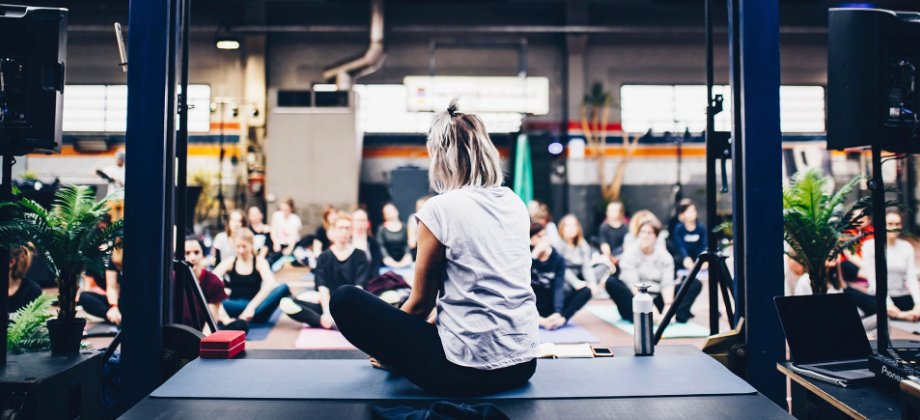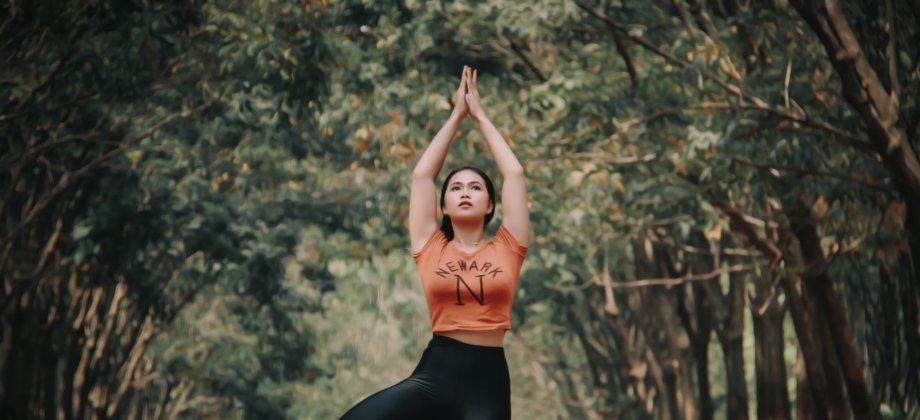
How to Launch Your Yoga Career Without Spending a Fortune
Have you recently completed your YTT and want to set yourself up as an online yoga teacher?
Or have you been teaching in-person classes and are looking to transition to an online-based model?
Teaching yoga online certainly offers many perks; no commuting, the potential to earn more money, etc. However, the start-up costs can be pretty high, especially if you're planning to create on-demand yoga videos.
Microphones, lighting, website hosting, marketing, none of these things are cheap. But the good news is that you don't have to spend a small fortune to start. So today, we're sharing five clever hacks for launching an online yoga business while keeping costs low.
5 Ways to Reduce Yoga Business Start-Up Costs
Whether you're planning to teach online classes, create courses, or run a membership program, here's how to start working towards your yoga career goals on a low budget.
Choose a Cheap Website Builder
If you're setting up an online business, you'll surely want to create a website, yet setting up one can be super expensive. However, some affordable options are available, allowing you to build and host your website for a very reasonable price.
The cheapest website builders are Weebly, Squarespace, WordPress, and Wix. However, they all offer different features and varying ease of use, so it's essential to research before deciding which one to use.
One thing you shouldn't omit when it comes to your website is SEO optimization. An SEO-focused website is a much more affordable way to generate more clients than paid marketing like Facebook Ads.
To avoid spending money, you can learn about SEO online. However, on freelancing sites like Fiverr, you can hire someone with these skills to optimize your website for an affordable price.
It's OK to start with the basics and then upgrade once you're making a consistent income.
Use a Low-Cost Online Booking System
If setting up a website is too overwhelming, or you want to keep things simple, use an online booking system instead. These allow you to create a page to showcase yourself as a teacher, with photos, videos, and a bio. Then, you can share a link to your online studio with your yogis, and they can book directly through the platform.
Online booking systems are certainly a more straightforward way to run your online business in the beginning. Still, some can be pretty pricey.
If you want to use a booking system but don't want to shell out on the hefty monthly costs, Momoyoga recently launched a free Personal plan for independent yoga teachers. This plan is especially suitable for teachers just starting their yoga journey or only teaching yoga occasionally.
It's on a pay-as-you-go basis, so if you're not using Momoyoga, you're not paying. Instead of paying monthly costs, you only pay a small percentage once you start earning revenues. So Momoyoga only succeeds if you succeed.
Learn more about the Personal Plan
Avoid Paid Marketing
Sure, the quickest way to get new clients is to use paid advertising combined with a strong marketing strategy and a funnel to convert leads to clients successfully. However, this marketing model is more than just expensive; you have to know what you are doing; otherwise, you are just pouring money down the drain.
If you're starting out, you likely don't want to invest in paid marketing immediately, as there is no guarantee it will succeed. Instead, I recommend utilizing the various free marketing methods.
If you already have an email list, this is an excellent zero-cost way to gain regular clients from a warm audience. If you have an SEO-optimized website, starting a blog will help generate organic traffic to your site, hopefully leading to new yogis and sign-ups. And then there is the use of social media.
This type of organic marketing does take a while to work and requires a lot of time and effort. However, if you stick to it, you will find new clients without splashing out on promotional content and paid ads.
Use Your Smartphone As a Webcam
While teaching live classes, you want to appear clear to your yogis, but many built-in laptop webcams create a blurry or pixelated image. However, there are some low-cost ways around this. The first is to buy an external webcam and connect it to your computer. These are generally cheap and provide a noticeably better resolution.
An even better hack I've found is to connect your smartphone to your laptop and use the camera as your webcam. This gives your classes a much clearer, crisper image and is easy to set up when using an app like Camo. Camo has a free version with the Camo watermark, or you can pay a small annual fee to remove it.

Get Savvy With Video & Audio Quality
Whether teaching live classes or recording videos, audio is the most important thing. If you're on a budget and can't afford to buy much filming equipment, prioritize audio by investing in a microphone.
Many experienced online yoga instructors use expensive mics like the Rode. However, buying the most costly equipment doesn't make sense when you're starting out. Luckily, some much cheaper alternatives are just as good.
You can get a decent wired or wireless microphone that you attach to your clothing for less than $100. For example, the Deity Pocket Wireless Microphone is a much cheaper alternative to Rode with sufficient sound quality for online teaching and filming videos.
Then, instead of buying expensive lighting, utilize natural light. Firstly, choose a spot in your home with lots of natural light and place yourself in front of a large window. Avoid filming or teaching with windows behind you, as this will make you appear too dark.
I also recommend using white curtains or shades over the windows in the room to make the lighting appear softer, creating the effect of a softbox light.
Final Thoughts
It is a myth that starting an online yoga business or building a home video studio has to be expensive. There are many tips and tricks to get your teaching career off the ground without a huge investment.
Remember that you don't have to ensure everything is perfect before you launch. It's OK to start with the basics and then upgrade once you're making a consistent income.






